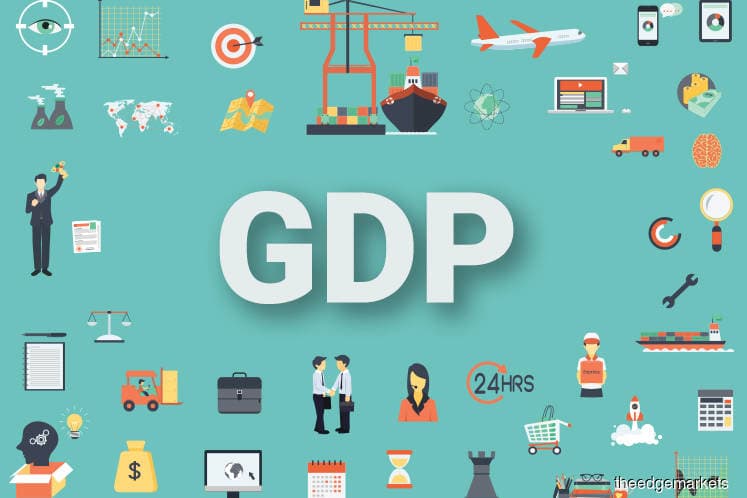
This article first appeared in The Edge Malaysia Weekly on November 27, 2017 - December 3, 2017
MALAYSIA’s stronger-than-expected economic growth so far this year has, interestingly, not translated into faster loan growth in the banking sector.
From an investment standpoint, the “disconnect” between economic and loan growth could make Malaysia the least attractive of the five key banking markets in Asean next year, analysts say.
Nomura Global Markets Research, in a report on Asean banks last week, highlights that it prefers markets where growth momentum at the macro and banking levels are in harmony, given that strong economic growth often translates into healthy credit expansion and earnings growth for banks.
“We believe that countries where both momentum of economic growth and banking credit expansion are well-aligned will outperform their peers in 2018. Our pecking order is the Philippines, followed by Thailand, Indonesia, Singapore and Malaysia,” it says in the Nov 21 report.
“For Malaysia, although at the macro level, there is upside risk to growth, we do not expect it to translate into a significantly faster credit growth for the banking system, unlike in the case of the Philippines’ banks. In fact, for Malaysia banks, we forecast a slow loan growth of 4.5% in 2017,” it adds. Loans in Malaysia grew 5.3% in 2016.
Malaysia’s gross domestic product growth in the first three quarters of this year came in at a robust 5.9%. Bank Negara Malaysia governor Tan Sri Muhammad Ibrahim, after announcing 3Q GDP growth of 6.2% y-o-y two weeks ago, said the economy was on track to register growth of 5.2% to 5.7% for the full year, and may even exceed that estimate.
Following that, Nomura now has a GDP forecast of 5.8% for 2017 and 5% for 2018. Loan growth for those years are projected at 4.5% and 5% respectively. Most other research houses are also projecting modest loan growth of between 4% and 5% in 2017 and 2018.
Based on Bank Negara’s latest monthly banking statistics, loan growth in September grew 5.2% y-o-y and just 3.5% on an annualised basis.
So, why isn’t the better economic growth translating into stronger loan growth?
“When you look at the loan growth number, there are two elements to it — loan disbursement and the usual repayment of loans which have been drawn down in the past. While the loan approval is indeed translating into a higher disbursement number, the fact is that the repayments are growing faster than disbursement, especially in residential and non-residential property loans. So, it causes a drag on loan growth,” Nomura’s banking analyst for Malaysia, Tushar Mohata, shares his view with The Edge in a telephone interview.
He says this is a trend that has come about since early last year.
“For example, if RM3 billion of property loans are disbursed in a month, but at the same time, RM2.5 billion of property loans are repaid, then, the loan growth will not be that strong.”
Nomura also believes that policies to cool down Malaysia’s property sector and address relatively high household debt, while necessary, are putting pressure on banks’ loan growth.
It notes that a potential policy rate hike next year — it sees Bank Negara raising the overnight policy rate by 25 basis points in January to 3.25% — will put even more pressure on growth. “The medium-term industry loan growth should average 5% to 7%, relatively weaker than other Asean-5 banking systems, due to overall high household debt-to-GDP (2016: 88%) and property-cooling measures. [The loan growth of] banks with overseas exposures (such as CIMB Group, which has about 20% of its loan book from Indonesia, and Malayan Banking Bhd, which has 25% from Singapore) will also depend on the regional markets,” it says.
Nomura also points out that the valuations of Malaysian banks remain expensive relative to other Asean banks, especially given their weaker return on equity (ROE) profile.
“Malaysian banks may look cheap on a forward price-to-book (PBV) and price-to earnings basis, but this has be viewed in conjunction with an overall slower earnings growth trajectory due to slower loans growth. The policies to cool down the property sector and address high household debt suggest that credit growth for Malaysian banks is likely to be moderate with limited upside, unlike in the case of banks in the Philippines, Indonesia and Thailand, which have potential upside from major infrastructure investments in the next few years,” it says.
Its top banking pick in Malaysia is CIMB Group Holdings Bhd as it sees the bank as the only meaningful ROE turnaround story. It has a “buy” on only one other bank, Public Bank Bhd.
Nomura believes the Philippine banks are likely to be the biggest beneficiaries of the country’s fast-growing economy, and should see strong earnings visibility and valuation multiple expansion. “Thai banks are at an early stage of economic recovery, and as positive signs continue to emerge, the potential for a share price rerating is strong. Indonesia banks, after enjoying a 2017 rally due to earnings recovery, might face limited upside without further growth. Singapore and Malaysia banks, at their current ROEs, trade at an expensive valuation, in our view,” it says.
Save by subscribing to us for your print and/or digital copy.
P/S: The Edge is also available on Apple's AppStore and Androids' Google Play.